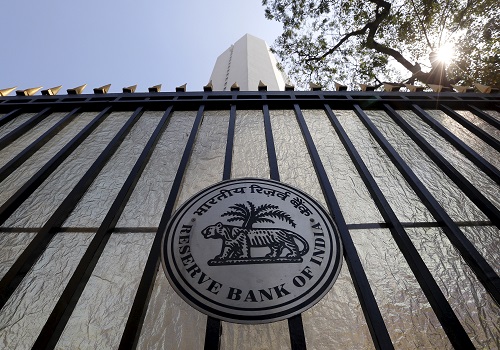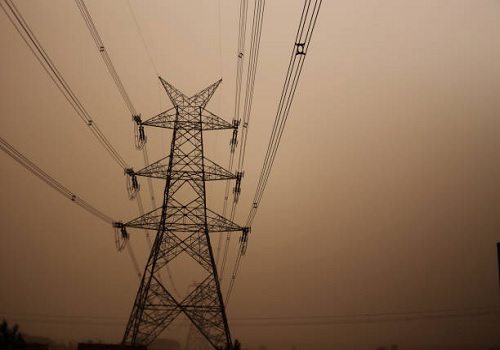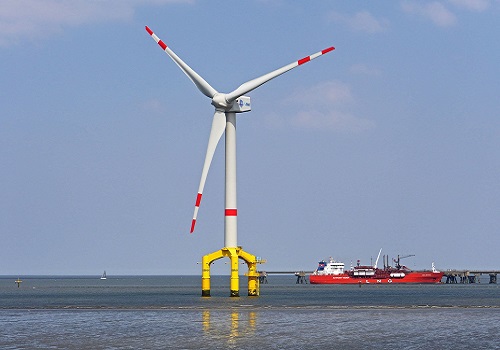Jeera trading range for the day is 26290-28010 - Kedia Advisory

Follow us Now on Telegram ! Get daily 10 - 12 important updates on Business, Finance and Investment. Join our Telegram Channel
Gold
Gold exhibited a robust performance in the previous trading session, settling up by 0.43% at 61769. The surge in prices was attributed to a softer U.S. dollar and increased safe-haven demand amid the ongoing Middle East conflict. Investors are closely monitoring comments from a Federal Reserve official for insights into the central bank's stance on interest rates, contributing to the cautious market sentiment. In the U.S., economic activity showed little or no change from December through early January, with firms reporting mixed pricing pressures and signs of a cooling labor market. This underscores the delicate balance the Federal Reserve is attempting to maintain—reducing inflation while sustaining economic growth and employment levels. Fed Governor Christopher Waller's recent remarks highlighted the positive economic indicators but acknowledged a gradual slowdown in growth. The accounts of the meeting revealed a commitment to steady policies and higher borrowing costs to address uncertainties. Federal Reserve Governor Michelle Bowman raised concerns about a proposed plan to increase bank capital requirements, citing "known deficiencies. From a technical standpoint, the gold market is currently undergoing short covering, with a notable 7% drop in open interest to settle at 6944. Despite this, prices surged by 264 rupees. The support level is identified at 61570, and a breach below could lead to a test of 61365. On the upside, resistance is anticipated at 61890, and a move above could propel prices to test 62005.
Trading Ideas:
* Gold trading range for the day is 61365-62005.
* Gold edged higher due to a weaker U.S. dollar and amid the Middle East conflict.
* Investors are waiting for comments from a Fed official to understand the future trajectory of interest rates.
* U.S. economic activity showed little or no change, with mixed pricing pressures and signs of a cooling labor market.
Silver
Silver prices experienced a modest uptick of 0.22% on the previous day, settling at 71615, driven by a subdued dollar and a dip in Treasury yields. The market sentiment was influenced by a cautious approach after a sharper-than-expected decline in US jobless claims, indicating a historically tight labor market. This, in turn, tempered expectations of interest rate cuts. Earlier, strong US retail sales data and hawkish comments from policymakers had prompted investors to reassess their expectations regarding monetary easing. A notable factor affecting the market dynamics was the second consecutive monthly decline in US business inventories in November, particularly in retail and wholesale stocks. FOMC member Waller's stance against rate cuts, citing a robust labor market and economic activity, contributed to a shift in market expectations. Currently, there is a 50% chance priced in for a Fed rate cut in March, a significant drop from the 90% probability earlier in the month, as per CME’s Fed Watch Tool. The minutes from the ECB's meeting revealed confidence among officials in the gradual return of inflation to the target, though they emphasized maintaining a restrictive stance for some time. From a technical perspective, the market is witnessing fresh buying, with a 3.28% increase in open interest, settling at 27904, and prices up by 159 rupees. Silver is finding support at 71290, and a breach below could test the 70965 levels. On the upside, resistance is likely at 71800, and a move above could lead to prices testing 71985.
Trading Ideas:
* Silver trading range for the day is 70965-71985.
* Silver gains as the dollar stayed a bit subdued and Treasury yields dipped
* US jobless claims fell sharply, indicating a tight labor market and reducing expectations of an interest rate cut
* FOMC member Waller argued against rate cuts, citing a strong labor market and economic activity
Crude oil
Crude oil prices surged by 3.01% to settle at 6152, primarily driven by escalating tensions in the Middle East. The US conducted strikes on Houthi targets in Yemen, and Pakistan retaliated with military strikes on separatist targets in response to Iran's actions. This geopolitical unrest in the region contributed to the upward momentum in oil prices. On the supply side, the API reported an unexpected increase of 0.483 million barrels in US crude inventories last week. However, the decline in Cushing, Oklahoma, provided a partial offset. Extreme cold weather conditions in North Dakota, a major US oil-producing state, resulted in a notable reduction of 650,000 to 700,000 barrels per day in oil output. OPEC's monthly report indicated a positive outlook for global oil demand, forecasting a robust increase of 1.85 million barrels per day to reach 106.21 million bpd by 2025. The IEA also revised its 2024 oil demand growth forecast upward by 180,000 bpd to 1.24 million bpd. Contrastingly, the US EIA reported a fifth consecutive monthly decline in oil output from top shale-producing regions. From a technical standpoint, the market is currently undergoing short covering, evidenced by a significant drop in open interest by -28.37%, settling at 2282. Prices rose by 180 rupees. Crude oil is finding support at 6043, and a breach below could test the 5935 levels. On the upside, resistance is likely at 6216, and a move above could lead to prices testing 6281.
Trading Ideas:
* Crudeoil trading range for the day is 5935-6281.
* Crude oil edged up amid increasing tensions in the Middle East.
* OPEC said global oil demand will rise by a solid 1.85 million bpd in 2025 to 106.21 million bpd
* Extreme cold weather conditions caused oil output to fall by 700,000 bpd in North Dakota.
Natural gas
Natural gas prices experienced a significant decline of -4.65%, settling at 225.5, driven by forecasts predicting a drop in demand and increased output with the anticipation of warmer-than-normal weather in late January. The decrease was also influenced by a reduction in the flow of gas to U.S. liquefied natural gas (LNG) export plants, hitting a one-year low as energy firms likely redirected gas to the domestic market following a surge in U.S. power gas prices due to extreme cold weather.The extreme cold not only led to a record-high daily gas demand but also froze wells, cutting gas supplies and causing a decline in average gas output in the Lower 48 states. Despite a significant daily drop in U.S. gas output to a 12-month low of 90.6 bcfd, it was still less severe than losses experienced during previous winter storms. Meteorological projections indicate a shift from colder-than-normal temperatures to mostly warmer conditions from Jan. 22-Feb. 1, prompting financial company LSEG to forecast a decline in U.S. gas demand from 154.2 bcfd to 140.7 bcfd. From a technical perspective, the market witnessed fresh selling, marked by a 42.64% increase in open interest, settling at 17237. Prices are currently down -11 rupees, with natural gas finding support at 217.8. A breach below this level could lead to a test of 210.1, while resistance is expected at 239.7, and a move above could result in prices testing 253.9.
Trading Ideas:
* Naturalgas trading range for the day is 210.1-253.9.
* Natural gas prices are expected to ease due to forecasts of warmer weather in late January.
* The amount of gas flowing to U.S. LNG export plants has decreased to a one-year low.
* Average gas output in the Lower 48 states has fallen in January compared to December.
Copper
Copper prices eked out a marginal gain of 0.01%, settling at 713.35, amidst persistent dollar strength and subdued demand. The Federal Reserve's resistance to market expectations of multiple rate cuts in the face of ongoing inflationary pressures contributed to a stronger US dollar, impacting copper benchmarks priced in the currency and squeezing the purchasing power of importers. China, a major player in the copper market, saw slower-than-expected growth figures, further dampening the outlook as the country refrains from implementing additional stimulus measures. This caution was evident in the People's Bank of China's unexpected decision to maintain its medium-term facility rates. Additionally, copper stocks at major Chinese warehouses surged by nearly 40% since the beginning of the year, reflecting hesitancy among manufacturers to place significant bids and a plunge in Yangshan copper premiums. Challenges in copper production were also noted in Chile, a key copper-producing region. The Chilean Copper Commission (Cochilco) reported a slowdown in copper production growth for the decade, citing delays in projects under construction. Despite this, Antofagasta reported a 2% increase in copper production for 2023, reaching 660,600 metric tons. Technically, the copper market is undergoing short covering, marked by a 5.19% drop in open interest, settling at 4821. Prices inched up by 0.05 rupees, with support at 710.7. A breach below this level could lead to a test of 707.9, while resistance is anticipated at 716.1, and a move above may see prices testing 718.7.
Trading Ideas:
* Copper trading range for the day is 707.9-718.7.
* Copper settled flat due to a strong dollar and muted demand.
* Slower growth figures from China and hesitation to deliver stimulus measures have impacted demand.
* Copper stocks at Chinese warehouses have risen by nearly 40% since the start of the year.
Zinc
Zinc prices faced a decline of -0.41%, settling at 219.45, as concerns about interest rate cuts and an uncertain economic recovery in China weighed on market sentiment. The backdrop of delayed interest rate cuts by the U.S. Federal Reserve added to the uncertainty, impacting global markets. China's economic performance fell slightly below expectations, with particularly worrying data emerging from the property sector, where property sales measured by floor area plummeted by 23% in December. Other economic indicators for the same month revealed sluggish retail sales growth, tepid investment expansion, and signs of improvement in industrial output. The global zinc market showed a deficit of 71,600 metric tons in November 2023, up from a deficit of 62,500 tons in October, according to data from the International Lead and Zinc Study Group (ILZSG). However, for the first 11 months of 2023, the ILZSG reported a surplus of 211,000 tons, a notable shift from the deficit of 86,000 tons recorded during the same period in 2022. Chinese Premier Li Qiang offered a more optimistic outlook, stating that the Chinese economy had rebounded and moved upward, estimating a growth rate of around 5.2% in 2023, surpassing the official target of approximately 5%. From a technical perspective, the zinc market is undergoing fresh selling, marked by a 2.77% increase in open interest, settling at 2408. Prices are down by -0.9 rupees, with support at 218.2. A breach below this level could lead to a test of 217, while resistance is anticipated at 220.8, and a move above could see prices testing 222.2.
Trading Ideas:
* Zinc trading range for the day is 217-222.2.
* Zinc dropped due to uncertainty over interest rate cuts and China's economic recovery.
* Concerns about China's economy were fueled by disappointing data and delayed interest rate cuts by the Fed.
* China's economic growth slightly missed forecasts, with alarming numbers in the property sector.
Aluminium
Aluminium prices experienced a decline of -0.65%, settling at 197.45, as LME aluminium stocks surged by 25% since December 14, signaling ample supplies of the metal. This increase in inventory suggests a well-supplied market, contributing to the downward pressure on prices. The economic landscape in China added to the bearish sentiment, with the country missing growth forecasts, and the debt-heavy property sector witnessing continued declines in sales. Federal Reserve policymakers' resistance to multiple rate cuts in the face of persistent inflation fueled a stronger US dollar, further impacting aluminium prices. However, despite economic headwinds, China's aluminium imports surged by 28% in 2023, reaching 3.06 million metric tons, driven by robust demand and higher prices. The country's primary aluminium consumption was projected to grow by 3.9% to 42.5 million tons in 2023, buoyed by increasing demand from the solar and auto sectors. Notably, China's imports of primary aluminium from Russia soared by 178.3% in the first 11 months of 2023, reaching 1.06 million tons, according to customs data. Meanwhile, China's primary aluminium production increased by 3.7% to 41.59 million metric tons in 2023, with December production standing at 3.59 million tons, up 4.9% from the same period the previous year. From a technical standpoint, the aluminium market is witnessing long liquidation, marked by a -5.71% drop in open interest, settling at 3484. Prices are down by -1.3 rupees, with support at 196.9. A breach below this level could lead to a test of 196.2, while resistance is anticipated at 198.7, and a move above could see prices testing 199.8.
Trading Ideas:
* Aluminium trading range for the day is 196.2-199.8.
* Aluminium dropped as LME stocks have jumped by 25% since Dec. 14.
* China's aluminium imports rose by 28% year on year to 3.1 million tonnes in 2023.
* China missed forecasts for economic growth while sales in the debt-heavy property sector continued to decline.
Cotton
Cotton prices experienced a marginal uptick, settling at 55240 with a 0.25% increase, driven by low-level buying. However, global dynamics have put pressure on prices, as world consumption in 2023/24 is forecasted to be 1.3 million bales lower than the previous month. Reductions in consumption are expected in key cotton-producing countries such as India, Indonesia, Pakistan, Uzbekistan, and Turkey. Additionally, world ending stocks for 2023/24 are projected to be 2.0 million bales higher, influenced by increased beginning stocks and production coupled with lower consumption. The CAI maintained its estimates for the 2023-24 season, with domestic consumption flat at 311 lakh bales. Pressing estimates for the season were retained at 294.10 lakh bales. The CAI's observations are based on inputs from members and trade sources. Reports indicate a decline in pink bollworm infestation in the cotton crop in India, reducing from 30.62% during 2017-18 to 10.80% in 2022-23. However, infestation is still observed in various cotton-growing areas across the country. The ICAC projects that global cotton production will surpass consumption for the second consecutive year. Cotton lint production is expected to grow by 3.25% year-on-year to 25.4 million metric tons in the 2023-2024 season, while consumption is forecasted to marginally decline to 23.4 million metric tons. In the major spot market of Rajkot, cotton prices ended at 26410.2 Rupees, showing a slight decrease of -0.21%. From a technical perspective, the market is currently under short covering, with no change in open interest and prices up by 140 rupees. Cotton is finding support at 55020, and a further decline could test the 54810 levels. Resistance is anticipated at 55420, with a potential move above leading to prices testing 55610.
Trading Ideas:
* Cottoncandy trading range for the day is 54810-55610.
* Cotton gained on low level buying after seen pressure as world consumption forecast lower than last month.
* World 2023/24 ending stocks are forecast 2.0 million bales higher this month driven by higher beginning stocks.
* World production is 260,000 bales higher with China’s crop up 500,000 bales and Argentina’s production higher as well
* In Rajkot, a major spot market, the price ended at 26410.2 Rupees dropped by -0.21 percent.
Turmeric
Turmeric prices exhibited a positive trend, settling at 13884 with a 1.21% increase, driven by weaker production prospects and constrained stocks in the market. The market also found support in the anticipation of enhanced export opportunities. However, the upside potential is perceived to be limited due to slower buying activities, as traders expect the release of stocks ahead of the commencement of new crops in January 2024. The crop condition remains satisfactory, with harvest readiness expected during January to March. The current levels of buying activity, coupled with decreasing supplies, are anticipated to contribute to price stability. The increased demand for turmeric in both developed and emerging nations has led to a 25% rise in exports. However, expectations of a 20–25% decline in turmeric seeding, particularly in regions like Maharashtra, Tamil Nadu, Andhra Pradesh, and Telangana, signal shifting priorities among farmers. In November 2023, turmeric exports fell by 15.34% compared to October, and by 30.78% compared to November 2022. In November 2023, imports dropped by 48.82% compared to October, and by 12.99% compared to November 2022. From a technical perspective, the market is witnessing fresh buying, with a 1.5% increase in open interest to settle at 12870. Prices have risen by 166 rupees. Turmeric is currently finding support at 13702, and a further decline could test the 13518 levels. On the upside, resistance is expected at 14010, with a potential move above leading to prices testing 14134.
Trading Ideas:
* Turmeric trading range for the day is 13518-14134.
* Turmeric gains amid weaker production prospects and tighter stocks in the market.
* While Support is also evident for improved export opportunities.
* However, upside seen limited as buying activities has been slower in expectation new crops.
* In Nizamabad, a major spot market, the price ended at 13051.15 Rupees gained by 0.13 percent.
Jeera
Jeera, also known as cumin, faced a downward trend in prices, settling at 27095 with a 1.99% decrease. This decline can be attributed to the surge in production in key cultivating states, namely Gujarat and Rajasthan, where the acreage for jeera reached a four-year high in the current rabi season. The significant expansion of cultivation areas, driven by the previous season's record prices, underscores the strong correlation between market prices and acreage. Gujarat experienced a remarkable 160% increase in jeera cultivation, covering 5.60 lakh hectares, surpassing the normal acreage of 3.5 lakh hectares. Similarly, Rajasthan witnessed a 25% rise, reaching 6.90 lakh hectares. The global demand for Indian jeera faced a slump as buyers turned to alternative sources like Syria and Turkey due to higher prices in India. However, there was a 30.04% increase in exports from October to November 2023, indicating a potential revival. Jeera imports during the same period plummeted by 1,134.63%, standing at 16,330.89 tonnes, with a notable 81.18% drop in November 2023. In the major spot market of Unjha, the price of jeera ended at 31062.4 Rupees, witnessing a 0.57% decrease. From a technical standpoint, the market is undergoing long liquidation, with a 2.01% drop in open interest to settle at 1902. Prices have decreased by 550 rupees. Jeera is currently finding support at 26700, and a further decline could test the 26290 levels. On the upside, resistance is anticipated at 27560, with a potential move above leading to prices testing 28010.
Trading Ideas:
* Jeera trading range for the day is 26290-28010.
* Jeera prices dropped due to higher production prospects
* In Gujarat, Cumin sowing witnessed very strong growth by nearly 103% with 530,030.00 hectares against sown area of 2022
* Stockists are showing interest in buying on recent downfall in prices triggering short covering.
* In Unjha, a major spot market, the price ended at 31062.4 Rupees dropped by -0.57 percent.
Views express by all participants are for information & academic purpose only. Kindly read disclaimer before referring below views. Click Here For Disclaimer












 320-x-100_uti_gold.jpg" alt="Advertisement">
320-x-100_uti_gold.jpg" alt="Advertisement">










